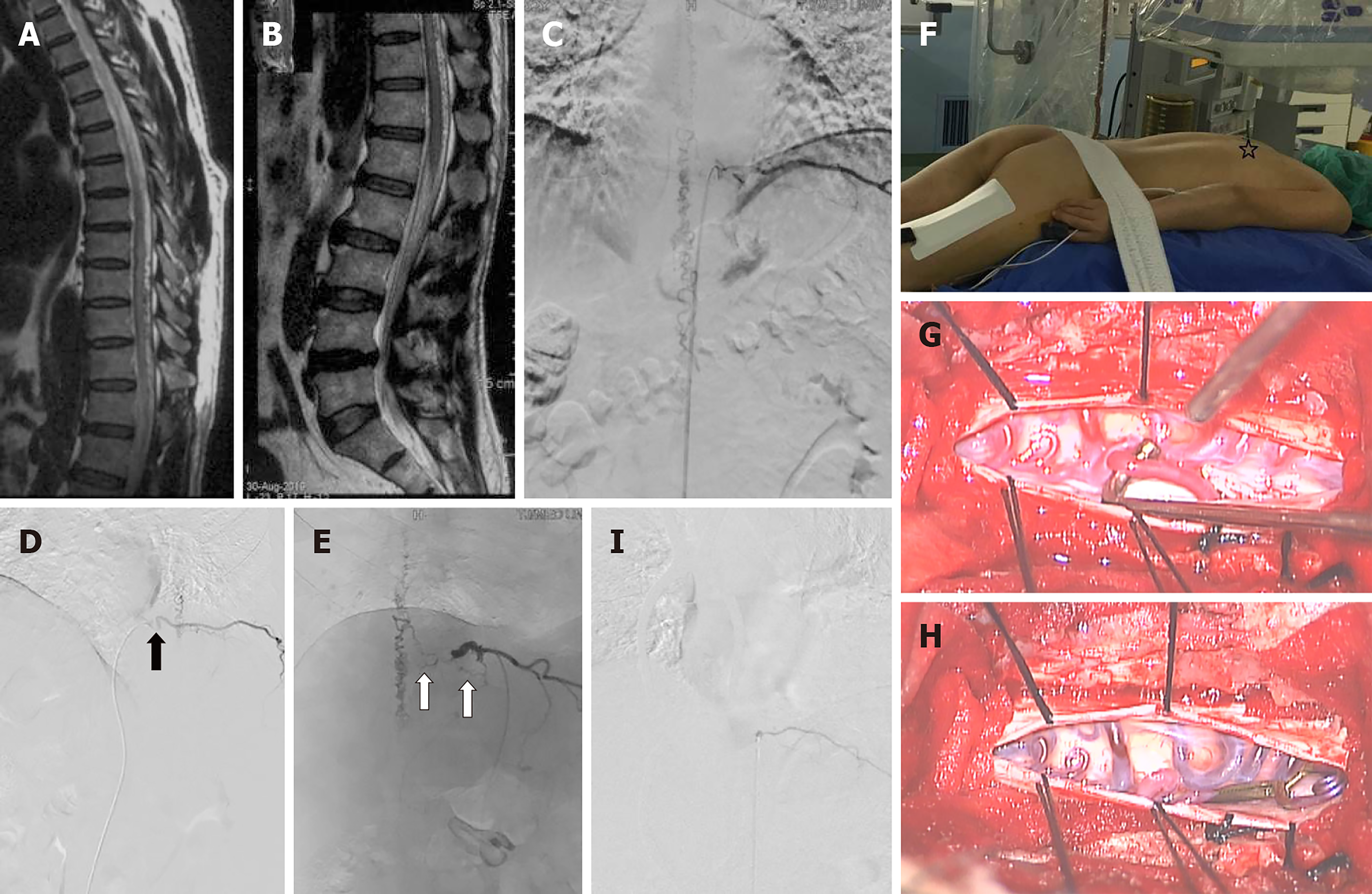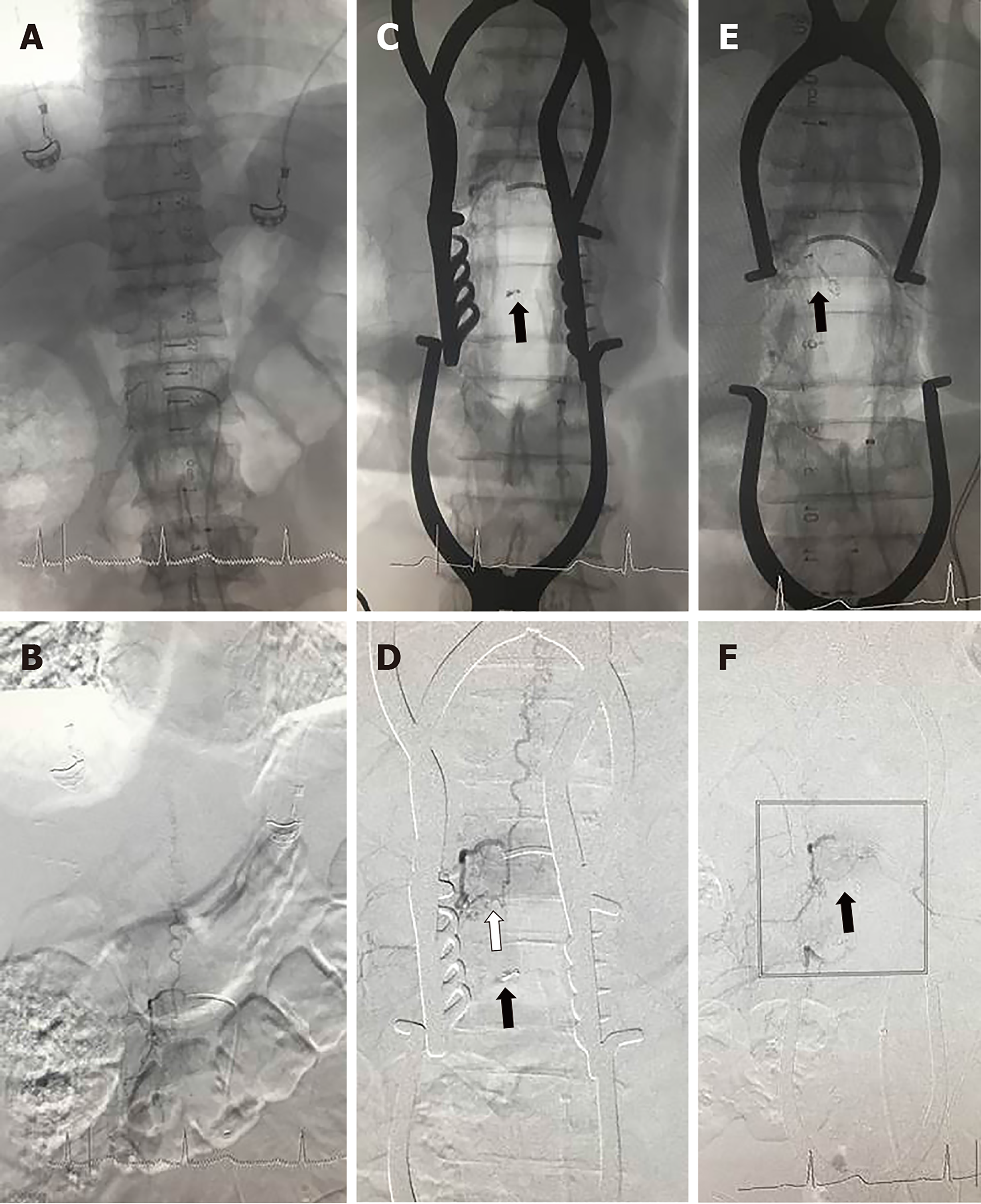Copyright
©The Author(s) 2020.
World J Clin Cases. Mar 26, 2020; 8(6): 1056-1064
Published online Mar 26, 2020. doi: 10.12998/wjcc.v8.i6.1056
Published online Mar 26, 2020. doi: 10.12998/wjcc.v8.i6.1056
Figure 1 Preoperative sagittal MR images, intraoperative angiograms, and intraoperative images obtained in Case 1 with a left T-9 SDAVF treated in hybrid-OR.
A and B: Sagittal T2-weighted magnetic resonance images demonstrating typical thoracolumbar spinal cord signal abnormalities associated with the serpiginous dorsal spinal vein; C-E: Digital subtraction angiography (DSA) images demonstrating a left T-9 spinal dural arteriovenous fistula (SDAVF). DSA from left anterior oblique (LAO/Figure 1 D) view showed the S-shaped tortuosity at the beginning of the intercostal artery (black arrow), and DSA from right anterior oblique (RAO/Figure 1 E) view showed that the feeding artery of the SDAVF originating from the intercostal artery was very thin and tortuous (white arrow); F: Intraoperative photographs showing the localization of the fistulae and skin incision using the dual-marker localization technique under flat-panel dynamic fluoroscopy; G and H: Intraoperative photographs showing the SDAVF in exact correspondence with the interoperative DSA images: The spinal cord had a dorsal arterialized vein before clip ligation, and the tension of the dorsal vein decreased after obliteration of the fistula. I: Intraoperative DSA showing that the SDAVF was completely obliterated. DSA: Digital subtraction angiography; SDAVF: Spinal dural arteriovenous fistulas.
Figure 2 Intraoperative angiograms obtained in Case 11 with an L-1 lumbar SDAVF treated in hybrid OR.
A and B: Preoperative MASK and digital subtraction angiography (DSA) images displayed that the location of the spinal dural arteriovenous fistula was predicted to be in the dura at the right L-1 dorsal root; C and D: During the operation, a suspected feeding artery was found initially and clipped temporarily under the microscope; however, the first intraoperative MASK and DSA images displayed that the fistula (white arrow) was still visualized and that the microvascular clip (black arrow) was below the right fistula; E and F: The second intraoperative MASK and DSA images showed that the spinal dural arteriovenous fistula had completely disappeared, and the microvascular clip (black arrow) was adjusted at the right fistula. DSA: Digital subtraction angiography.
- Citation: Zhang N, Xin WQ. Application of hybrid operating rooms for treating spinal dural arteriovenous fistula. World J Clin Cases 2020; 8(6): 1056-1064
- URL: https://www.wjgnet.com/2307-8960/full/v8/i6/1056.htm
- DOI: https://dx.doi.org/10.12998/wjcc.v8.i6.1056










